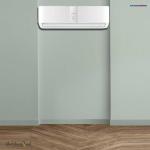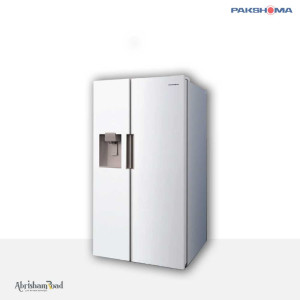Air Conditions At Wholesale in Good Price
- Air Circulation: An air conditioner draws in warm indoor air through a fan, passing it over coils filled with a refrigerant, typically a special type of fluid that easily changes from a liquid to a gas.
- Heat Exchange: As the warm air moves over the coils, the refrigerant absorbs heat from the air, causing it to evaporate and turn into a gas.
- Cooling: The now-cooler air is blown back into the room, reducing the indoor temperature.
- Dehumidification: During the process, the air conditioner also condenses moisture from the air, which is collected and drained outside, further enhancing comfort.
- Cycle Continues: This cycle repeats continuously until the desired indoor temperature is reached, controlled by a thermostat.
An indoor climate control device, commonly known as an air conditioner or AC, is a crucial appliance employed to manage and regulate indoor temperature and humidity. Here's an overview of a standard cooling system:
Exterior Unit:
This system consists of an external unit, often placed outside a building or residence, and an indoor unit located within the room. The external unit accommodates the compressor and condenser, while the indoor unit houses the evaporator and components responsible for air circulation.
Cooling Process:
The cooling mechanism operates by extracting warmth from the indoor air using a refrigerant, which circulates between the indoor and outdoor units. This substance absorbs heat from the indoor environment, effectively lowering the indoor temperature. The expelled heat is released outside, resulting in a more comfortable and cooler indoor environment.
Temperature Control:
For precise climate control, modern models offer accurate temperature adjustment through adjustable thermostats. Users can set their desired temperature, prompting the AC unit to maintain it by cycling on and off as necessary.
Humidity Control:
Additionally, the system aids in humidity regulation. As it cools the air, it removes excess moisture, creating a more comfortable and less humid atmosphere, especially during warm and muggy conditions.
Air Filtration:
Moreover, many AC units incorporate air purification features. These specialized filters are designed to eliminate particles like dust, pollen, allergens, and pollutants from the indoor air, not only enhancing comfort but also contributing to improved indoor air quality.
Modes and Features:
Various operational modes, including cooling, heating (in specific models), fan-only, and energy-saving modes, cater to individual preferences. Some advanced models boast smart features, remote control capabilities, programmable timers, and sleep settings to provide personalized comfort.
Energy Efficiency:
Energy efficiency is another critical consideration in the design of these appliances. Energy-efficient models consume less electricity, which translates to cost savings on energy bills and a reduced environmental footprint.
Installation:
For optimal performance and longevity, it is advisable to enlist professional installation services. Professionals ensure correct placement, proper handling of refrigerants, and appropriate electrical connections.
Maintenance:
Lastly, routine maintenance is essential to uphold the efficiency of the cooling system. This entails tasks such as filter cleaning or replacement, refrigerant level checks, and ensuring all components remain in good working order.
Summary:
an indoor climate control system, commonly referred to as an air conditioner or AC, serves as a pivotal appliance for regulating indoor temperature and humidity levels. It plays a crucial role in enhancing indoor comfort, particularly in regions with extreme weather conditions.
Add your review
Your email address will not be published. Required fields are marked *
Please login to write review!
Looks like there are no reviews yet.

by Abrisham Road
Inspection group .co

Pakshoma Group DNA
- Store rating
0
- Staff
35
- Offers
> 100
- Products
4









